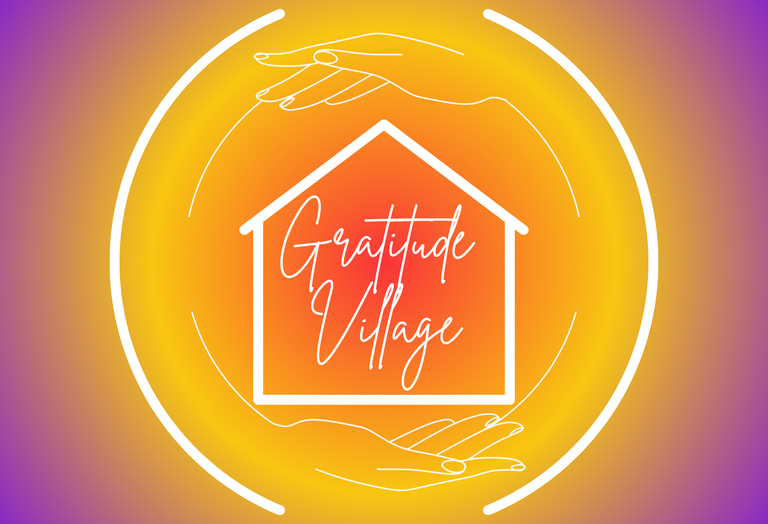Happy Holidays from Everyone at Gratitude Village!
A Day in the Life of a Cohousing Community
This blog provides a narrative that walks readers through a typical day in a cohousing community, highlighting the interactions, activities, and shared responsibilities. For a visual rendition of a day in the life, check out our gallery.
Gratitude Village
10/27/20244 min read


A Day in the Life of a Cohousing Community
Imagine waking up in a place where your neighbors aren’t just people you occasionally wave to from your car but are friends you share meals with, solve problems with, and celebrate life’s moments with. This is life in a cohousing community—a place where collaboration, connection, and shared responsibility create a rich and fulfilling daily experience. Let’s walk through a typical day in a cohousing community, exploring the interactions, activities, and shared responsibilities that make this lifestyle unique.
Morning: Shared Spaces, Shared Lives
As the sun rises, the cohousing community begins to stir. In many cohousing communities, the day starts early, with residents engaging in morning routines that may include a shared yoga session in the community’s common house, a workout in a communal gym, or a stroll through the shared gardens. These activities set a positive tone for the day, offering both physical exercise and an opportunity to connect with neighbors.
For families, the morning might involve gathering in the common kitchen for breakfast. While each family has its own private kitchen, the communal kitchen often serves as a social hub in the mornings. Parents might sip coffee together, exchanging tips on the best local events for kids, while children eagerly talk about the day ahead. The presence of shared spaces encourages these spontaneous interactions, making morning routines feel less rushed and more communal. The community may have a preschool where the younger children will spend the morning enjoying supervised activities or several families may home school together, using the common house as their classroom and sharing the challenges of teaching.
As the morning progresses, some residents may head off to work, while others stay behind to engage in community activities. In cohousing communities, remote work is common, and shared workspaces or home offices make this possible. These spaces are equipped with all the essentials from high-speed internet to comfortable seating and quiet huddle spaces creating an environment where residents can be productive without the isolation that often comes with working from home.
Midday: Community and Cooperation
By midday, the cohousing community is buzzing with activity. For those at home, the shared garden or greenhouse is a popular spot. Residents work together to tend to the vegetables, herbs, and flowers, using sustainable practices that reflect the community’s commitment to environmental stewardship. Gardening is not just a task here—it’s a communal activity that strengthens bonds between neighbors. Residents share gardening tips, swap stories, and even engage in friendly competitions over who can grow the largest tomatoes. In the winter, some communities flood their common green to create an ice skating pond.
Lunch is often a shared experience as well. While not every meal is communal, many cohousing communities organize regular shared lunches or potlucks, especially on community workdays. These meals are a highlight of the day, providing a chance for residents to come together, enjoy home-cooked food, and engage in lively conversation. The menu might feature dishes made from the produce grown in the community garden adding a layer of satisfaction to the meal.
During these communal meals, it’s common to see a mix of generations at the table. Elders share wisdom with younger residents, children entertain with stories from school, and everyone chips in to help with setting up and cleaning up. This intergenerational interaction is a cornerstone of cohousing life, fostering a sense of family beyond the boundaries of blood relations.
Afternoon: Collaboration and Care
In the afternoon, cohousing life continues with a blend of individual and group activities. Some residents may take part in scheduled community meetings or workshops. Consensus decision-making is a key aspect of cohousing, so meetings are held regularly to discuss community issues, plan events, and address any concerns. These meetings are not just about logistics—they are an opportunity for residents to voice their opinions, listen to others, and find common ground. The collaborative nature of these discussions ensures that everyone’s voice is heard and that decisions reflect the collective will of the community.
Meanwhile, children might gather in the shared play areas or participate in educational activities organized by community members. In cohousing, the saying “it takes a village to raise a child” is taken to heart. Parents often share childcare duties, allowing them to balance work and family life more effectively. Older children might help younger ones with homework or join them in creative projects, fostering a strong sense of responsibility and community spirit.
For those with a passion for sustainability, the afternoon might involve working on green initiatives such as maintaining the community’s composting system or participating in a local clean-up effort. Many cohousing communities are deeply committed to environmental sustainability, and residents work together to reduce their ecological footprint. These activities not only benefit the planet but also reinforce the community’s values and bring residents closer together.
Evening: Relaxation and Reflection
As the day winds down, the focus shifts to relaxation and reflection. Dinner in a cohousing community is often a special affair, with residents coming together for communal meals in the common house. These dinners are more than just a chance to eat—they are a time to unwind, share the day’s experiences, and strengthen the bonds that hold the community together.
After dinner, the common house might host various evening activities. Residents might gather for a movie night, a book club meeting, or a group meditation session. These activities provide a chance to relax, enjoy shared interests, and deepen relationships. For those who prefer quieter evenings, there’s always the option to retreat to one’s private home, where the sense of community is balanced with personal space.
On warm evenings, residents might take a leisurely walk around the community, stopping to chat with neighbors along the way. The layout of cohousing communities is often designed to encourage these kinds of interactions, with shared paths, gardens, and seating areas that invite spontaneous conversations. These moments of connection, however brief, contribute to the overall sense of belonging and support that defines cohousing life.
Conclusion: A Life of Connection and Purpose
A day in the life of a cohousing community is a blend of collaboration, shared responsibility, and meaningful connection. It’s a lifestyle that emphasizes the importance of relationships, not just with our neighbors, but with the environment and the broader community. While cohousing requires a commitment to participation and cooperation, the rewards are immense: a strong sense of belonging, a supportive network of neighbors, and a shared purpose that enriches daily life.
For those who seek more than just a place to live—who desire a community where they can grow, contribute, and thrive—cohousing offers a compelling alternative. It’s not just about living together; it’s about living well, with intention, and with others who share the same values. In cohousing, every day is an opportunity to connect, collaborate, and create a life that is not only sustainable but also deeply fulfilling.
COMMUNITY
Join us in embracing nature, diversity and connection.
Sustainability
DIVERSITY
info@gratitudevillageco.com
720-689-4821
© 2025. All rights reserved.
AFFORDABILITY
Gratitude Village Inc. is a 501(c)3 charitable corporation that values diversity, equity, and inclusion as essential to our mission
Subscribe to our Substack
Refund Policy




Gratitude Village is a Proud Member of these organizations
